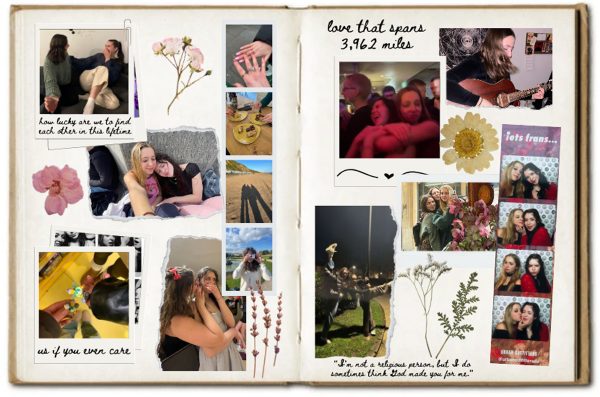Getting Weird
The season for SAD
More stories from Alyssa Anderson
I’m tired. So, so tired. No matter how much sleep I get, I always seem to have the capacity to sleep through three or more alarms every morning. Last week, I managed to sleep through a class that started at 1 p.m. ‘Tis the season, I guess, where all I can think about is sleep. Ugh.
Last night, I got nearly 10 hours of sleep and still couldn’t get out of bed in a timely manner. No matter how bright the sun shines on my face, no matter how much I want to eat breakfast and drink coffee while listening to NPR, my bed holds me prisoner. Call me lazy all you want, but seasonal depression is real. The winter blues are upon us once more.
Alongside my bipolar disorder and my generalized anxiety disorder, the jump from warm to cold weather sends me into a pit of lethargy and despair that feels almost impossible to climb out of. However, seasonal depression does not only affect those who (like me) already struggle with mental illness — it can happen to anyone.
Mayo Clinic defines seasonal depression, mostly referred to as Seasonal Affective Disorder, as a type of depression that is related to the changes in seasons. For most people with SAD, changes in mood begin and end at the same times each year. SAD is most commonly seen in the fall or winter months but can also occur in spring or summer with a different set of symptoms.
Symptoms of fall or winter SAD include:
- Oversleeping
- Appetite changes, especially a craving for foods high in carbohydrates
- Weight gain
- Tiredness or low energy
Symptoms of spring or summer SAD include:
- Trouble sleeping (insomnia)
- Poor appetite
- Weight loss
- Agitation or anxiety
As someone who struggles with bipolar disorder and anxiety, I am more prone to SAD. The changes of the seasons always make me feel a little… off. At the beginning of fall, I slowly start to lose energy and interest in school, work and other activities. The episodes of depression that accompany my bipolar disorder become more frequent and intense. As soon as the snow melts and the flowers begin to bloom, my mood takes a sharp turn in the other direction — my anxiety skyrockets, my energy levels soar and sleeping feels like a waste of time.
While my pre-existing mental health issues are risk factors for SAD, that doesn’t mean one has to have an existing mental illness to experience SAD.
Possible causes of SAD are:
- One’s biological clock (circadian rhythm). The reduced level of sunlight in fall and winter may cause winter-onset SAD. This decrease in sunlight may disrupt the body’s internal clock and lead to feelings of depression.
- Serotonin levels. A drop in serotonin, a brain chemical (neurotransmitter) that affects mood, might play a role in SAD. Reduced sunlight can cause a drop in serotonin that may trigger depression.
- Melatonin levels. The change in season can disrupt the balance of the body’s level of melatonin, which plays a role in sleep patterns and mood.
Last year, I was talking to my therapist about how the cold weather made me want to hibernate and she told me that humans, like plants, need sun to survive. Specifically, humans need vitamin D to function properly. She explained that vitamin D deficiencies have, in some cases, been linked to issues like depression and chronic pain and recommended that I pop some vitamin D supplements ASAP. So, I did. And it worked.
Vitamin D did not “cure” me in the slightest, but I noticed a significant difference within a week of starting the dose of supplements. Mainly, I had some of my energy back. I began to care about school again.
Medical News Today reported that vitamin D levels in the body fluctuate with the changing seasons in response to available sunlight. Thus, it is a logical assumption that the lack of vitamin D in winter months would cause depression. Though few studies examining this correlation have been done, I can attest to the positive effects of vitamin D and urge those struggling with SAD to consider picking up a bottle of supplements — after consulting a doctor first, of course.
Even if it’s a placebo effect, taking vitamin D supplements was the only way I survived last winter.
SAD is an extremely common condition, affecting roughly three million people worldwide. Don’t let the winter blues get you down.
Well, that’s all for this week. I’m going to pop some vitamin D supplements and get brainstorming on my spooky topic for next week. It’s Halloween season, after all, so things are about to get extra weird. Stay tuned.
Anderson can be reached at [email protected]











